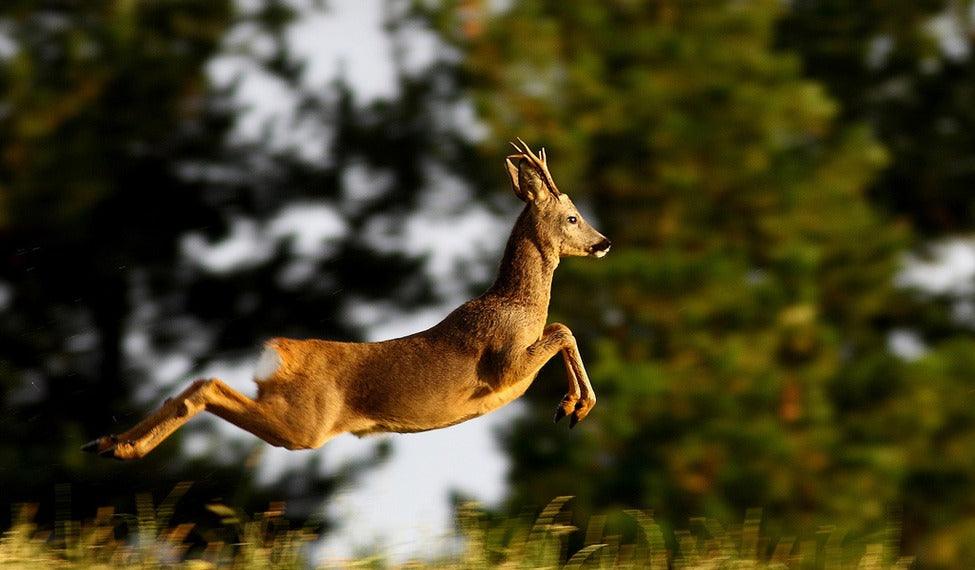Learn to understand a roe deer's reactions to a shot

The impact of a bullet on a roe deer is devastating for the animal. First, the shot generates a loud noise that the roe deer hears, putting it on alert just as the bullet hits it. This triggers a surge of adrenaline that prepares it to try to escape, hardening it somewhat. Second, the deformation of the bullet produces an impact that can even knock it down, and it also generates a hydrodynamic shock wave that, upon hitting a blood vessel, can propagate throughout the body.
These two effects combined cause almost all roe deer that are hit to show a reaction that is obvious to anyone with the ability to observe closely.

Source: AEPES
Shot in the neck
If the bullet fractures the neck bone, the animal will fall immediately and be difficult to track. However, if we aim for the neck and the animal doesn't fall in place, we can often forget to retrieve it. This usually happens because we won't have hit any veins or arteries, since at that distance from the head, the impact would have caused a hydrodynamic shock that would have knocked the animal down. Shooting at the neck is always risky, and if the animal flees, it's a bad sign.
Shot in the spine
The impact to the spine is one of the most impressive, as the animal literally collapses on the spot. They fall like a sack. However, if the shot doesn't affect the spine and only hits the vertebral apophyses, it's not fatal, and the animal recovers from the shock in a few seconds and walks away almost unharmed. This type of shot is known as "needle-heating" and can lead to a long search in which the roe deer will need to be finished off to secure it. If we're told it fell like a sack and when we arrive, they can't find the roe deer, that's a bad sign.
Shot in the leg or ham
The reaction is usually a kick, followed by flight or a loss of balance and a quick recovery to escape. If the bullet only pierces the ham without touching the bone, we will find a lot of blood, but the roe deer will be almost intact and difficult to capture. Conversely, if the bone breaks, the animal's locomotion will be greatly reduced, making it easier to track and capture.
Shot in the vital rib cage
Typically, a bullet hitting this area will have two distinct reactions. The first would be a jump and then a mad dash if the bullet didn't break any bones. Other times, the animal will crumple and come out more slowly; in this case, it's quite possible the bullet hit the heart. Sometimes, the bullet knocks it down and flips it upside down, but it will get back up and come out as if it hadn't been hit. Generally, these are well-placed shots that should lead us to a kill within a few meters.

The impact of a bullet on a roe deer triggers a series of crucial reactions depending on where the shot is fired. The sound of the shot alerts the roe deer and triggers an adrenaline response, preparing it for flight. The physical impact can result in broken bones, such as in the neck or spine, where the effect can be immediate or lead to a prolonged search to secure the animal. Shooting the legs or the vital ribcage also provokes different responses, from rapid flight to inability to move. In all cases, careful observation and interpretation of the roe deer's reactions are critical to ensuring an effective and humane capture of the animal.
Author: María Balletbó